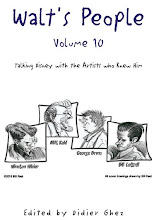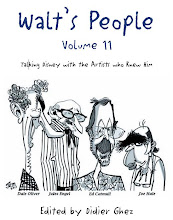A few days ago, I had the pleasure of interviewing Greg Glasgow and Kathryn Mayer, authors of the newly released Disneyland on the Mountain. Enjoy!
Didier Ghez: Why, how and when did you decide to write Disneyland on the Mountain?
We are both Disney fans who had heard a bit about Mineral King over the years, but when we visited the Walt Disney Family Museum in 2018, we saw the project mentioned on the museum’s extensive timeline of Walt’s life. What really piqued our interest was that the mention included the fact that Walt’s partner on the project was Willy Schaeffler, a well-known Colorado skier and head ski coach at the University of Denver in the 1960s and 1970s. We were familiar with Willy since Kathryn is a graduate of DU, and we actually met working at the school. That inspired us to look more into the story, and we quickly realized how much there was to it. We were shocked to learn how extensive the story was—from the environmental movement that was taking off at the time to Walt’s death in the middle of the planning for Mineral King and the battle going to the Supreme Court.
DG: Two books have already been released about the Mineral King project, Mineral King: Public Concern with Government Policy by John Harper, in 1982, and, more recently Dawn at Mineral King Valley: The Sierra Club, the Disney Company, and the Rise of Environmental Law by Daniel Selmi. What makes your new book different?
Thanks for asking this question! Both of those books are great, and they were helpful resources for us as we wrote ours, but we really tried to set ours apart. Harper’s self-published book came out in 1982, as you mentioned, and is more or less his chronicle of his experience, as a Sierra Club member, fighting against the Disney development. Selmi, similarly, is a legal scholar and professor who did a great job writing about the legal aspects of the Sierra Club v. Morton case and its impact on environmental law. We were writing ours at the same time as Selmi was writing his, and his came out about a year before ours. We were glad after reading his, though, that his book turned out very different from ours.
In Disneyland on the Mountain, our goal was to tell both sides of the story—the Disney side and the environmentalist side—and to give equal weight to both. We also strived to do it in a very narrative way, with characters and dialogue, to make it a hopefully enjoyable and engaging read.
DG: What were the most important new sources of information that you got access to?
We were able to talk to many people on the Disney and the environmentalist side of this battle, including Michael McCloskey, who was the leader of the Sierra Club during the Mineral King fight, and Jean Koch, a Mineral King cabin owner who was a very vocal opponent of the development and who donated all of her Mineral King materials—newspaper articles, legal documents, letters, maps, etc.—to the University of Southern California. We visited that archive for a few days early on in our research.
On the Disney side, we talked with former employees including Frank Allnutt and Frank Stanek, as well as the descendants of several Disney people who were involved with the Mineral King project.
We also tracked down other archival documents, old Disney reports, and letters, among other resources.
DG: What were the most interesting discoveries that you made in the course of your research?
Most interesting to us were Walt’s experiences at the 1960 Winter Olympics, and the fact that he was such a dedicated and award-winning conservationist. We also had no idea, when we started our research, that the Mineral King battle lasted nearly two decades and involved a legal case that went all the way to the Supreme Court.
DG: What were the most challenging aspects of this book project?
As you would imagine,
the most challenging part was doing all the research and tracking down people
to talk to. Most of our interviews came from simply finding people online and
reaching out to see if they would talk to us (sometimes they would point us in
the direction of another source). And as you’ll see from our endnotes, our
research involved numerous sources, including newspaper and magazine articles,
Disney annual reports, book chapters, meeting minutes, government documents,
documentary films, and more. It was a lot to go through!
DG: Are you planning to write more Disney-related books?
We would love to! We are big Disney people and are so fascinated by the company’s rich history. We are starting to work on our next project now, and while it’s too early to divulge details, it is in a somewhat similar vein to Disneyland on the Mountain.























No comments:
Post a Comment